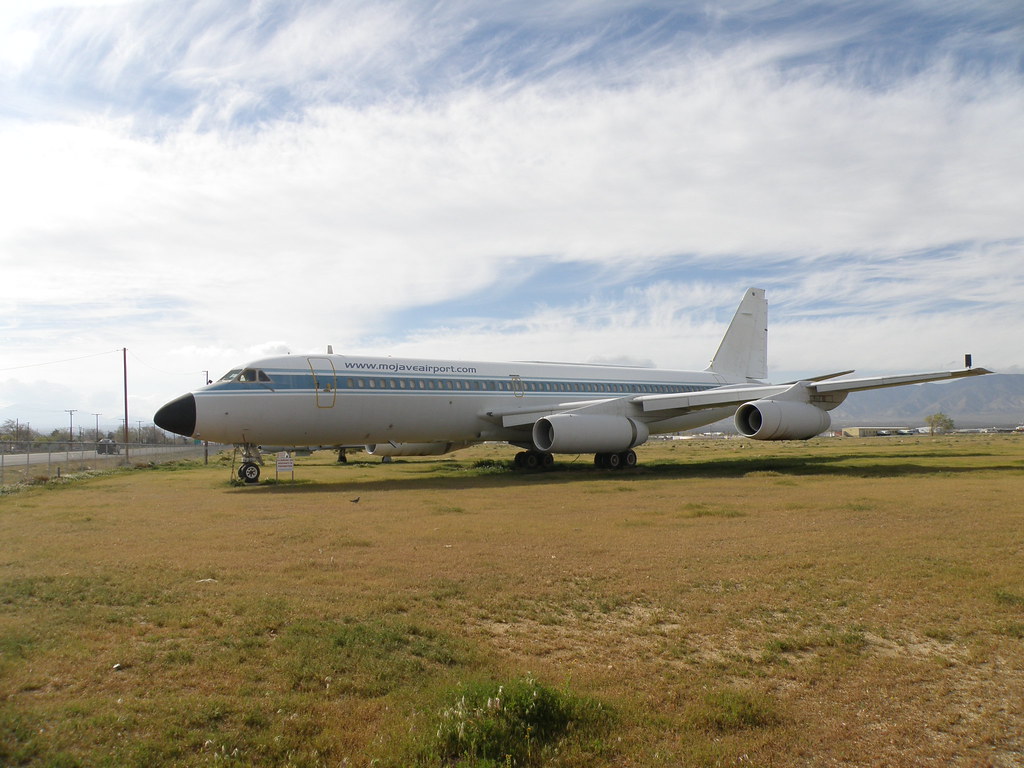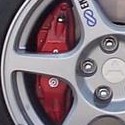|
On airliners.net there are some photos of a Convair 880 in Portugal that had been being used as a strip club.
|
|
|
|

|
| # ? May 18, 2024 12:14 |
|
movax posted:Oh and I guess John Stennis is cool enough to join that club. And Carl Vinson. I'll give the Navy some credit, at least all the politicians who got ships named after them (so far) had some connection to the Navy...Stennis, Vinson, and Reagan were all friends of the Navy in that they advocated for increased shipbuilding/higher ship numbers/etc., and all the others served in the Navy. Even if Stennis and Vinson were racist pieces of poo poo when it came to domestic policy. Still doesn't justify there not having a Yorktown, Lexington, Saratoga, or Wasp currently commissioned though. At least there will soon be another Enterprise, that's something I guess.
|
|
|
|
StandardVC10 posted:The 990 was also pretty fast, though I'm not sure if you need to make a distinction between the two. Speaking of which, if you're in the area of MHV they've got at least one sitting around still. CJ805-23s are badass. The fan section is on the aft end of the engine.
|
|
|
|
iyaayas01 posted:And Carl Vinson. I'll give the Navy some credit, at least all the politicians who got ships named after them (so far) had some connection to the Navy...Stennis, Vinson, and Reagan were all friends of the Navy in that they advocated for increased shipbuilding/higher ship numbers/etc., and all the others served in the Navy. Even if Stennis and Vinson were racist pieces of poo poo when it came to domestic policy. Naming ships after politicians/cities that pushed for increased funding for your service is pretty slimy. See: The entire 688 class.
|
|
|
|
Convair made some cool poo poo. There was a photo I remember of a Hustler on burners at night. Looked loving awesome. Which isn't surprising, because Hustlers were cool as gently caress.
|
|
|
|
MrYenko posted:CJ805-23s are badass. The fan section is on the aft end of the engine. The 880 and 990 both had really interesting engines. The 880 has what were basically non-afterburning J79s and the 990 had turbofan variants of the same engines but with the fan section in the rear of the engine. I'm not sure what the differences between the civilian CJ805 and military J79 were, but I imagine they were minimal. Imagine an airliner now with four F110s hanging off the wings.  Edit: Best 880 video: http://www.youtube.com/watch?v=isP1LVVZ6nU Previa_fun fucked around with this message at 15:52 on Dec 4, 2012 |
|
|
|
I asked this before but it might have got lost in the noise. Does anyone fly with a tablet and software like Foreflight or Garmin Pilot? The reason I ask is because I've been testing out Garmin Pilot on my Nexus 7 and I like it a lot. However the GPS reception in the aircraft is poo poo. This doesn't really jive with what Ive read on various other forums. Then again those guys are all flying GA aircraft and probably have less metal around them than I do, especially I since I sit just aft of the cockpit in the FE jump seat. I'm guessin I'll probably have to invest in one of the available Bluetooth GPS antennas but I'm just trying to get an idea of what others' experience is with this stuff.
|
|
|
|
Previa_fun posted:Edit: Best 880 video: http://www.youtube.com/watch?v=isP1LVVZ6nU Convair Contrail Chemtrail
|
|
|
|
I just found this write up on another forum and thought it would go over well here. I'm not sure of the original author as there was no link provided: ------------------------------------------------------------------------------- I (the author) just completed the first pilot training class on the 787 at United Airlines, an airplane which is destined to replace the 767 and live for many years after I retire. Here's what I've learned in 787 training so far. By the way, last night we passed our MV (maneuvers validation) check ride, with emergency after emergency, and the FAA observing. Tonight was our LOE (line-oriented evaluation), again with FAA - this time 2 FAA observers. It's 0200 and I just got back to the hotel and poured a well-earned glass of wine to celebrate. I now have a type rating in the 787. Phew. I'm pretty confident this will be the last one for me. I've summarized some of the major differences and unique features of the 787 versus more traditional "old school" airplanes like the 777 (not kidding) - from the pilot's viewpoint. Our "Differences" course takes 11 days to gain an FAA type rating, which is a "common" type rating with the 777. The course has been like drinking from a fire hose, but has finally come together. Some of our pilots attended Boeing's 5-day differences course, and deemed it unacceptable. The FAA approved the Boeing 5-day course, but our guys decided it lacked too much information. FAA is observing our checkrides now, and taking our course as well, to certify the training. We're just the guinea pigs. A computer nerd would describe the 787 as 17 computer servers packaged in a kevlar frame. The central brains is the Common Core System (CCS). Two Common Computing Resources (CCRs) coordinate the communications of all the computer systems, isolating faults and covering failed systems with working systems. When battery power is first applied to the airplane in the morning, it takes about 50 seconds for the L CCR to boot up. After this, a few displays light up and you can start the APU. If there is a major loss of cockpit displays, this may require a CCR reboot, which would take about a minute. Here are a few of the major features and differences from the 777. Electrics - Though a smaller plane, the 787 has 4 times the electric generating power of the 777 - 1.4 gigawatts. Generators produce 235 VAC for the big power users. Other systems use the traditional 115 VAC and 28 VDC. There are 17 scattered Remote Power Distribution Units which power about 900 loads throughout the plane. The big power distribution system is in the aft belly, along with a Power Electronics Cooling System (PECS). This is a liquid cooling system for the large motor power distribution system. There's also an Integrated Cooling System (ICS), which provides refrigerated air for the galley carts and cabin air, and a Miscellaneous Equipment Cooling System for Inflight Entertainment Equipment. If 3 of the 4 engine generators fail, the APU starts itself. The APU drives two generators, and can be operated up to the airplane's max altitude of 43,000 feet. If you lose all 4 engine generators, the RAT (ram air turbine) drops out (like a windmill), powering essential buses. (It also provides hydraulic power to flight controls if needed). If you lose all 4 engine generators and the two APU generators (a really bad day), you are down to Standby Power. The RAT will drop out and provide power, but even if it fails, you still have the autopilot and captain's flight director and instruments, FMC, 2 IRSs, VHF radios, etc. If you're down to batteries only, with no RAT, you'd better get it on the ground, as battery time is limited. Brakes and antiskid are electric - 28V - so you don't lose brakes or antiskid even when you're down to just standby power. Normal flight controls are hydraulic with a couple exceptions. Engine driven and electric hydraulic pumps operate at 5000 psi (versus normal 3000 psi) to allow for smaller tubing sizes and actuators, thus saving weight. If you lose all 3 hydraulic systems (another bad day), you still have two spoiler panels on each wing which are electrically powered all the time, as is the stabilizer trim. You can still fly the airplane (no flaps, though). If you're having an even worse day and you lose all hydraulics and all generators, flight control power is still coming from separate Permanent Magnet Generators (PMGs) which produce power even if both engines quit and are windmilling. If the PMGs fail, too, your flight controls will be powered by the 28 V standby bus. If you lose all 3 pitot/static systems or air data computers, the airplane reverts to angle of attack speed (converts AOA to IAS), and this is displayed on the normal PFDs (primary flight displays) airspeed indicator tapes. GPS altitude is substituted for air data altitude and displayed on the PFD altimeter tapes. Very convenient. If you lose both Attitude and Heading Reference Units (AHRUs), it reverts to the standby instrument built-in attitude & heading gyro, but displays this on both pilot's PFDs for convenience. If you lose both Inertial Reference Units, it will substitute GPS position, and nothing is lost. If someone turns one or both IRSs off in flight (I hate it when they do that), you can realign them - as long as one of the GPSs is working! There is no pneumatic system. The only engine bleed is used for that engine's anti-ice. Wing anti-ice is electric. Each of two air conditioning packs control two CACs, which are electric cabin air compressors. The four CACs share two air inlets on the belly. Each pack controller controls two CACs, but if a pack controller fails, the remaining pack controller takes over control of all 4 CACs. There are no circuit breakers in the cockpit. To check on them, or if you get a message that one has opened (more likely), you select the CBIC (circuit breaker indication and control) display on one of the MFDs (multi function displays). There you can reset the virtual C/B if it is an "electronic" circuit breaker. You can't reset a popped "thermal" circuit breaker. If you have an APU fire on the ground or inflight, the fire extinguishing bottle is automatically discharged. If there is a cargo fire, the first two of seven bottles will automatically discharge also. There's a Nitrogen Generation System which provides automatic full-time flammability protection by displacing fuel vapors in the fuel tanks with nitrogen (Remember TWA 800?). Like the 767 and 777, the 787 also has full CPDLC capability (controller-to-pilot datalink communications). In addition, its full FANS capability includes ADS-B in & out. The controller can uplink speed, heading, and altitude changes to the airplane. These show up on a second line right under the speed, heading and altitude displays on the mode control panel. If you pilot wants to use them, he can press a XFR button next to each window. The controller can even uplink a conditional clearance, like - After passing point XYZ, climb to FL390. If you accept this, it will do it automatically. Fuel system - like the 777, the 787 has a fuel dump system which automatically dumps down to your maximum landing weight, if that is what you want. In addition, it has a Fuel Balance switch which automatically balances your L & R main tanks for you. No more opening crossfeed valves and turning off fuel pumps in flight. No more forgetting to turn them back on, either. Flight Controls - An "Autodrag" function operates when the airplane is high on approach and landing flaps have been selected. It extends the ailerons and two most outboard spoilers, while maintaining airspeed, to assist in glidepath capture from above, if you are high on the glideslope. The feature removes itself below 500 feet. Cruise flaps is an automated function when level at cruise. It symmetrically moves the flaps, ailerons, flaperons, and spoilers based on weight, airspeed and altitude to optimize cruise performance by varying the wing camber, thus reducing drag. Gust suppression - Vertical gust suppression enhances ride quality when in vertical gusts and turbulence. It uses symmetric deflection of flaperons and elevators to smooth the bumps. This should result in fewer whitecaps in passengers' coffee and cocktails. Lateral gust suppression improves the ride when on approach by making yaw commands in response to lateral gusts and turbulence. Instrument Approaches - The airplane is actually approved for autoland based not only on ILS but on GLS approaches - GPS with Ground based augmentation system, which corrects the GPS signals. GLS minimums are the same as CAT I ILSs - 200' and 1/2 mile visibility. Our airline is not yet approved for GLS autolandings yet, though we will be doing GLS approaches. Special Cat I & II HUD approaches - These allow lower than normal minimums when the Heads Up Devices are used at certain approved airports (HUDs). The HUDs include runway centerline guidance which helps you stay on the centerline on takeoff when visibility is greatly reduced. It uses either ILS or GLS for this. Cabin - Pressurization differential pressure maximum is 9.4 psid, so the cabin altitude is only 6000 feet when at the max cruising altitude of 43,000 feet. There is a cockpit humidifier switch, and cabin air humidification is fully automatic. Cabin windows are larger than other airplanes, and window shading is electronic. The passenger can select 5 levels of shading, from clear to black. The flight attendants can control the cabin lighting temperature - mood lighting - to aid in dealing with changing time zones (evening light after dinner, morning light to wake up, etc.). Much of the cockpit seems like it was designed by Apple. The Control Display Units (CDUs) are virtual, so you can move them from one MFD to another. In fact, you can configure the displays in 48 different ways, I think, though we have found a few favorites we will use to keep it simple. To move the cursor from one MFD to another, you can either use a button, or you can "flick" your finger across the trackpad (Cursor Control Device) to fling the cursor from one screen to the next - much like an iPad. I'm going home this morning, and will return for a 777 simulator ride before I go back to work. They want to make sure we've still got the old-fashioned legacy airplane in our brain before we fly the 777 again, even though it shares a "common type rating". We won't get the first 787 until October, and begin operations in November or December. At that time I'll return for at least 4 days refresher training before beginning IOE - initial operating experience in the airplane - with passengers. What a ride. It may be "fuel efficient", but I'm glad someone else is paying for the gas. P.S. If you wish to share this with someone else, be my guest, but please remove all email address, and don't send it to your entire mailing list. I think the 787 will be a great plane, but there could be some surprises with this level of innovation. Time will tell
|
|
|
|
That's pretty cool to read about the 787 from a pilot's perspective since I get so much of it from an engineering perspective.
|
|
|
|
vulturesrow posted:I asked this before but it might have got lost in the noise. Does anyone fly with a tablet and software like Foreflight or Garmin Pilot? The reason I ask is because I've been testing out Garmin Pilot on my Nexus 7 and I like it a lot. However the GPS reception in the aircraft is poo poo. This doesn't really jive with what Ive read on various other forums. Then again those guys are all flying GA aircraft and probably have less metal around them than I do, especially I since I sit just aft of the cockpit in the FE jump seat. I'm guessin I'll probably have to invest in one of the available Bluetooth GPS antennas but I'm just trying to get an idea of what others' experience is with this stuff. Many many GA pilots fly with such equipment and software. In smaller planes, the GPS might have an easier time getting a signal, but I think more commonly pilots will have an external blue tooth GPS antenna sitting on top of the dash. They start around $100.
|
|
|
|
Did this ever get sorted out or can I install Flight Sim onto my laptop and actually control the plane http://www.wired.com/politics/security/news/2008/01/dreamliner_security
|
|
|
|
The owner of the company I work for flies with his ipad as a navigation device and he seems to like it. No idea what he's flying though, or if he's going to do the same thing with the King Air.
|
|
|
|
joat mon posted:Convair Chemtrails started showing up around the time jet travel became widespread. Coincidence?
|
|
|
|
Nostalgia4Infinity posted:Chemtrails started showing up around the time jet travel became widespread. Coincidence? What? Everyone knows that chemtrails started with the B17 raids on germany...  Just look at that glorious American chemical warfare! e: for irony, that image came from a conspiritard blog that actually unironically believes that that image shows the 'USAF' using chemtrails against their enemies, thus proof of chemtrails being real! SybilVimes fucked around with this message at 17:48 on Dec 4, 2012 |
|
|
|
Nerobro posted:Well this should be a mission. We need to find the best, scariest, or strangest low passes. https://www.youtube.com/watch?v=UntN_cZUQg8
|
|
|
|
cobra_64 posted:I just found this write up on another forum and thought it would go over well here. I'm not sure of the original author as there was no link provided: wow, I've heard there's a lot new but that is A LOT new... Some of it is just newer iterations of things that are already around, or just regular systems that exist on other aircraft (specifically some aircraft made by one European company in particular...). But no pneumatics? 235V electrics? I'm going on a Boeing factory course for the 787 next fall (well, penciled in at least) and it looks like I'll actually be learning something new!
|
|
|
|
This is a pretty good article from Boeing if you'd like to learn more about the 787's bleedless architecture. http://www.boeing.com/commercial/aeromagazine/articles/qtr_4_07/article_02_1.html
|
|
|
|
Previa_fun posted:The 880 and 990 both had really interesting engines. The 880 has what were basically non-afterburning J79s and the 990 had turbofan variants of the same engines but with the fan section in the rear of the engine. I made a post much earlier in the thread about the CV-990 and it's wacky engines; sadly, I don't have the time to find it ATM. E: found it: MrChips posted:In fairness, you are looking at a decidedly unconventional engine, the General Electric CJ805. Unlike most turbofan engines, where the fan is at the front of the engine, GE put the fan at the back of the engine. Here's a better look at the front of a CJ805: MrChips posted:Both the CF700 and the CJ805-23 have the fan mounted on a single stage, low-pressure free turbine. There is no physical connection between the core engine and the fan. As for four F110s hanging off the wings, the Airbus A340 (of all aircraft), comes closest to that of any aircraft. How? The CFM56 is based in the GE F101 engine, which itself was developed into the F110. So, not four F110s hanging off the wings, but four of its brothers. MrChips fucked around with this message at 00:48 on Dec 5, 2012 |
|
|
|
Did you know that Boeing doesn't allow cell phones or cameras on their factory tour? It's true! Tour was rad though, got to see lots of larval 747s, 777s, and 787s.
|
|
|
|
Short but sweet... http://m.youtube.com/watch?v=2nZh6D95X14
|
|
|
|
monkeytennis posted:Short but sweet... You'll want https://www.youtube.com/watch?v=2nZh6D95X14 if you're on a PC.
|
|
|
|
cobra_64 posted:I just found this write up on another forum and thought it would go over well here. I'm not sure of the original author as there was no link provided: I have a bit of a hard time believing a plane with ~ 106,000 horsepower can devote ~ 1,900,000 of that to electrical systems.
|
|
|
|
Advent Horizon posted:I have a bit of a hard time believing a plane with ~ 106,000 horsepower can devote ~ 1,900,000 of that to electrical systems. I noticed that as well; the 787 has 1.4 megawatts of electrical generation, which is still a huge amount for any aircraft.
|
|
|
|
As a passenger I'm really looking forward to playing with the 787's window tint feature. Got to put all that electricity to good use somehow.
|
|
|
|
Advent Horizon posted:I have a bit of a hard time believing a plane with ~ 106,000 horsepower can devote ~ 1,900,000 of that to electrical systems. Well, it uses most of that to shift time and thus save fuel.
|
|
|
|
Cocoa Crispies posted:Did you know that Boeing doesn't allow cell phones or cameras on their factory tour? It's true! I went on that tour last year and it was very cool. The no pictures part does suck but it was an incredible tour. I encourage any goon that lives or goes to visit Seattle to go up to Everett and do that tour. Also, the parking lot is right by the runway so you can watch all the airplanes doing test flights and deliveries.
|
|
|
|
Godholio posted:Well, it uses most of that to shift time and thus save fuel. Given that it's a jet airliner, we're going to see some serious poo poo before they even hit rotation speed. Low level passes - RNZAF pilots are crazy (too bad they don't have fixed wing fighters anymore): https://www.youtube.com/watch?v=HMZM17V_GYE https://www.youtube.com/watch?v=FqOcsx-k7FE https://www.youtube.com/watch?v=DNEF3nv896Y Bud Holland did a lot of stupid poo poo before he finally crashed...watch the whole video if you want to see it all, but the time stamp I've identified is where he almost takes a camera man's head off during a low altitude photo pass...the only reason they didn't pancake into the ridge on the third pass is because his co-pilot yanked back on the yoke at the last second: https://www.youtube.com/watch?v=kaN9-kBBvx4&t=4s That tanker video is French. Here's some more French insanity: https://www.youtube.com/watch?v=Wa_KrNNebzU German Phantom driver almost kills ~25 people: https://www.youtube.com/watch?v=x-Ta1Lp6oKo French helo pilots are also crazy, apparently: https://www.youtube.com/watch?v=Bj-pzSWbyBI
|
|
|
|
iyaayas01 posted:
The Phantom is gorgeous, gently caress the haters.
|
|
|
|
Cock Democracy posted:As a passenger I'm really looking forward to playing with the 787's window tint feature. Got to put all that electricity to good use somehow. everyone I know who has been on a 787 says they don't work. Blocking 98% of light just doesn't cut it when you're trying to sleep at noon local time - they said there was still enough light to read by. These people are also engineers at airlines about to buy 787's and are making GBS threads themselves at the number of extra parts to break let alone the number of passengers loving with extra things to help break them. Seriously, what's wrong with a plastic blind that blocks 100% of light, is properly dark enough to sleep, and only slides up/down and is idiot-proof? edit: they're actually asking boeing if they can alter their aircraft on the line to delete them. I've heard rumors that boeing will make plastic blinds an option because the electric ones are so poo poo in practice. Captain Postal fucked around with this message at 06:58 on Dec 5, 2012 |
|
|
|
Captain Postal posted:everyone I know who has been on a 787 says they don't work. Blocking 98% of light just doesn't cut it when you're trying to sleep at noon local time - they said there was still enough light to read by. Sounds about right for electro-chromatic glass in (current) practice. It's a very cool concept but I don't think the R&D funds have been thrown at it enough to make it a real replacement for dumb blinds that block light simply by being optically opaque materials. I got similar reports of the glass being "ehhhh" from classmates in the industry, but I guess it can be a subjective thing as people are different when it comes to judging what's too bright for sleep and what isn't'.
|
|
|
|
I always end up wearing my sunglasses to sleep on planes, even when its dark outside. Only time I can get away without them is on overnight long flights where they actually turn out all the lights, and everyone has their reading lights off.
|
|
|
|
The 787 has so much electricity that the UA pilot flying from Houston to Newark was afraid the aircraft was melting. He had to divert. link Pretty crazy that reports asked fire dept to look for any melting plastic from electricity arcing near the power distribution block on one side. I'm looking at possibly taking the JAL flight from San Diego to Tokyo but with these problems and the problems with their Boston to Tokyo 787 I think I might just stick to the "old school" 773er.
|
|
|
|
Man you can put me on an airplane in the middle of the day and I'll fall asleep in thirty seconds, max.
|
|
|
|
movax posted:I got similar reports of the glass being "ehhhh" from classmates in the industry, but I guess it can be a subjective thing as people are different when it comes to judging what's too bright for sleep and what isn't'.  Emirates even gives out a toothbrush and little stickers saying "wake for meal" and "do not disturb" you can stick on your headrest. Emirates even gives out a toothbrush and little stickers saying "wake for meal" and "do not disturb" you can stick on your headrest.I've conditioned myself that I get tired and want to fall asleep as soon as I hit that seat, no matter what time of day, but I don't take it to chance when I *really* need to get some sleep to adjust to a new time zone.
|
|
|
|
SybilVimes posted:What? Everyone knows that chemtrails started with the B17 raids on germany...
|
|
|
|
grover posted:Why anyone would try to sleep on a plane without a sleep mask, earplugs & drugs? Because some of us don't need any of that? As long as there's not a baby crying or something, I can sleep on any plane.
|
|
|
|
KYOON GRIFFEY JR posted:Man you can put me on an airplane in the middle of the day and I'll fall asleep in thirty seconds, max. I wish. It's impossible for me to sleep in a sitting position.
|
|
|
|
I find the drone of the engine of a Dash 8 sends me to sleep even if I don't want to.
|
|
|
|

|
| # ? May 18, 2024 12:14 |
|
Godholio posted:Because some of us don't need any of that? As long as there's not a baby crying or something, I can sleep on any plane. This is a skill most of the people I know in the military have acquired.
|
|
|












































